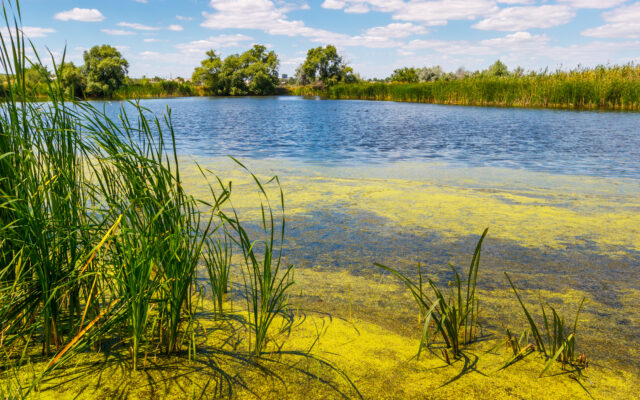Going Swimming? Be Mindful of Not-So-Clean Water

DES MOINES — Memorial Day weekend marks the beginning of water recreation season, and before putting on a swimsuit, Iowa environmental experts say being mindful of water quality can help avoid serious illness.
The Iowa Environmental Council hosted a forum this week to highlight key information before people flock to lakes and beaches.
Alicia Vasto, water program associate director for the Council, said E. coli outbreaks at state park beaches have been pretty consistent, and there has been a gradual increase in swim advisories prompted by harmful algae blooms.
They contain a toxin Vasto describes as “nasty” after coming in contact with it.
“Even, you know, your skin contact, it can cause rashes and hives,” Vasto outlined. “If you inhale it — like in water droplets, if you’re boating or water skiing or something like that — it can give you respiratory issues. If you swallow it, it can cause stomach pain and vomiting, and diarrhea.”
Algae blooms, which form in warm, stagnant waters, can resemble spilled green paint or pea soup, and emit a foul odor. The council advised swimmers to stay out of the water if warning signs are posted. Swimmers also are encouraged to shower after contact with surface water, even if there is not a warning. More than 20 such advisories were posted at Iowa’s state park beaches last year.
Toxic algae blooms have also been linked to fatal liver disease.
Peter Thorne, professor of occupational and environmental health at the University of Iowa, said there are similar health concerns for pets.
“Take dogs, for example. They’ll go in the water, even if it is scummy, and play in it, and they’ll ingest it,” Thorne observed. “And the ingestion is the real problem.”
The Centers for Disease Control and Prevention said in 2019, more than 200 animal deaths were reported around the country. The panel noted hot and dry summers, like the one Iowa saw last year, can fuel the growth of harmful algae. Farm runoff is considered a key source of surface water toxins.




